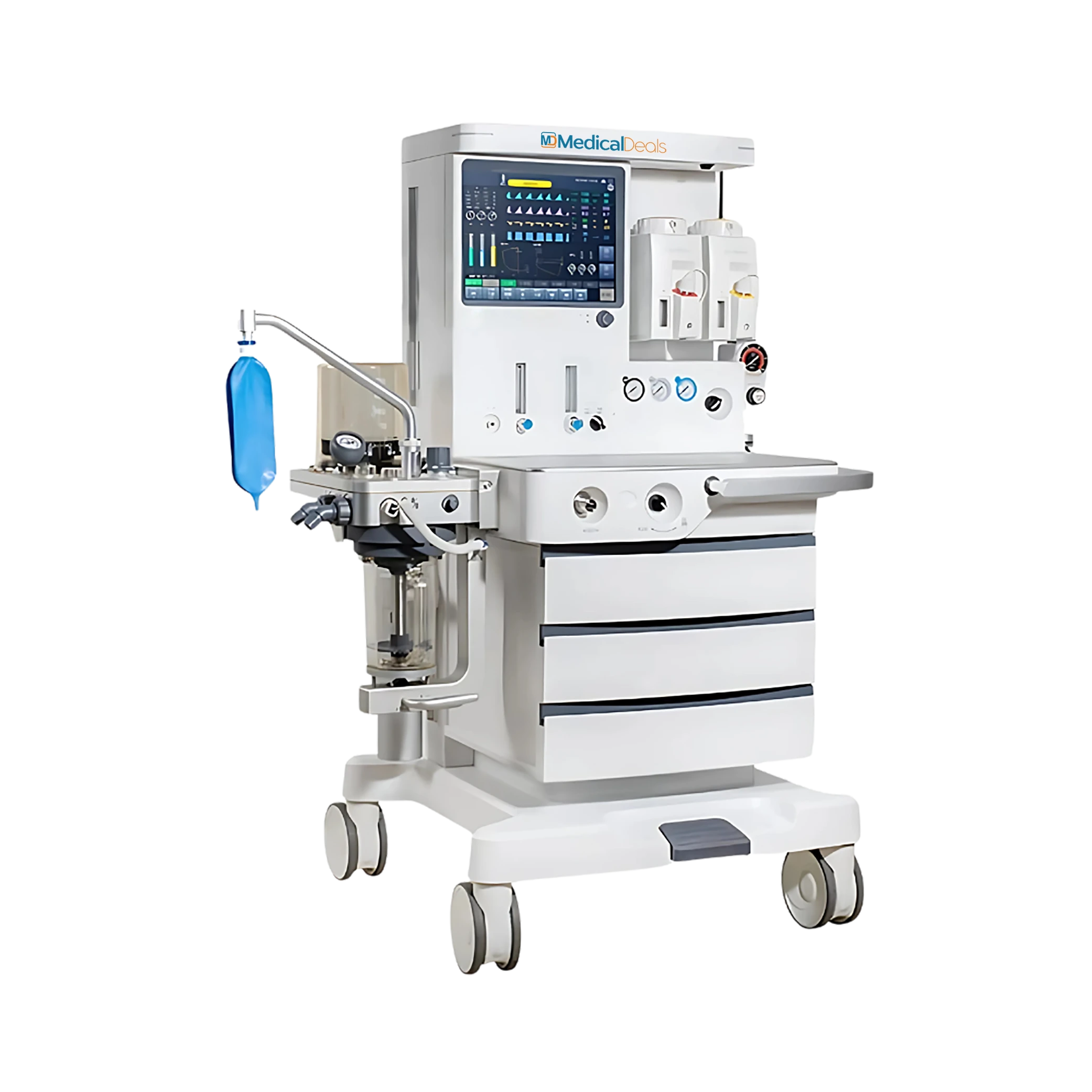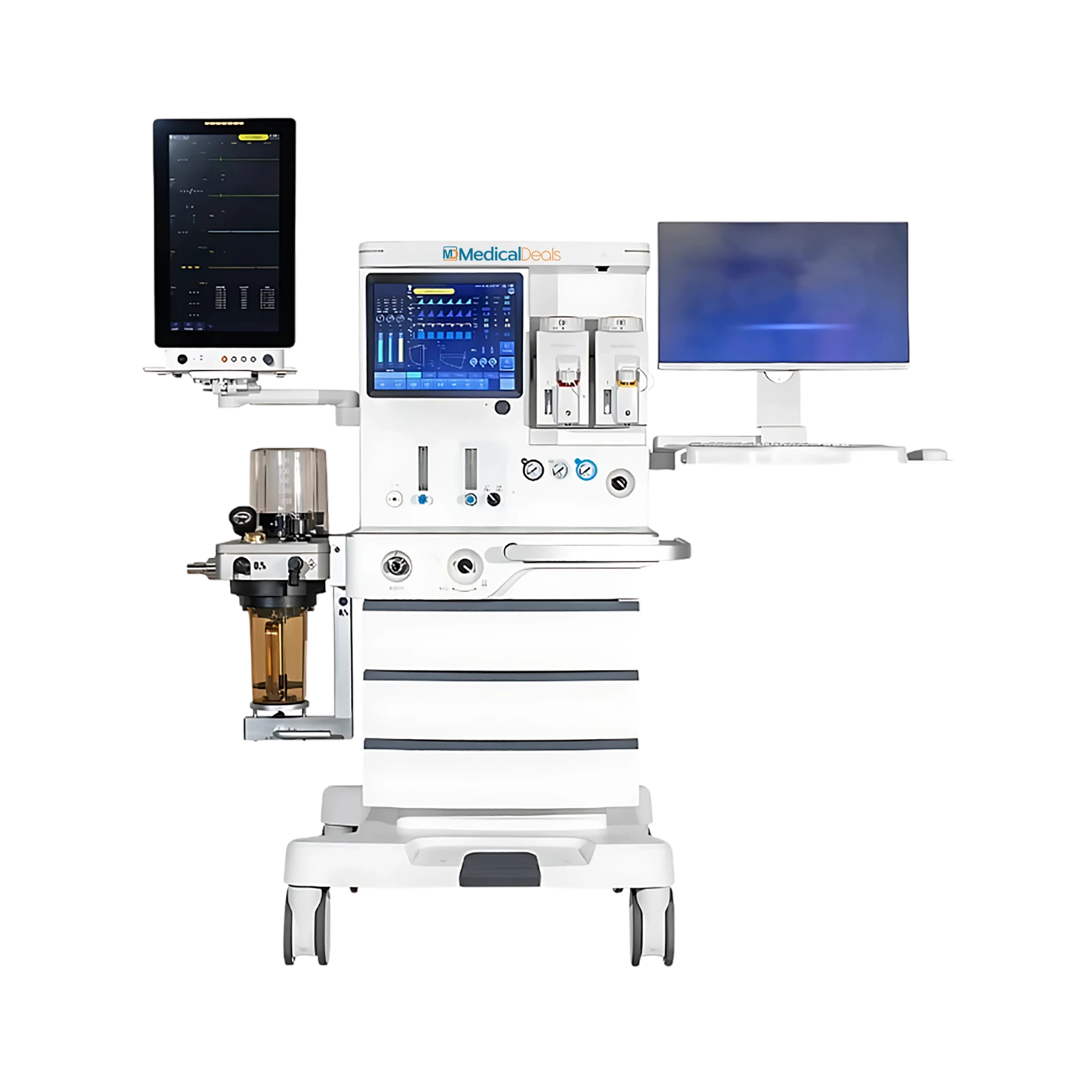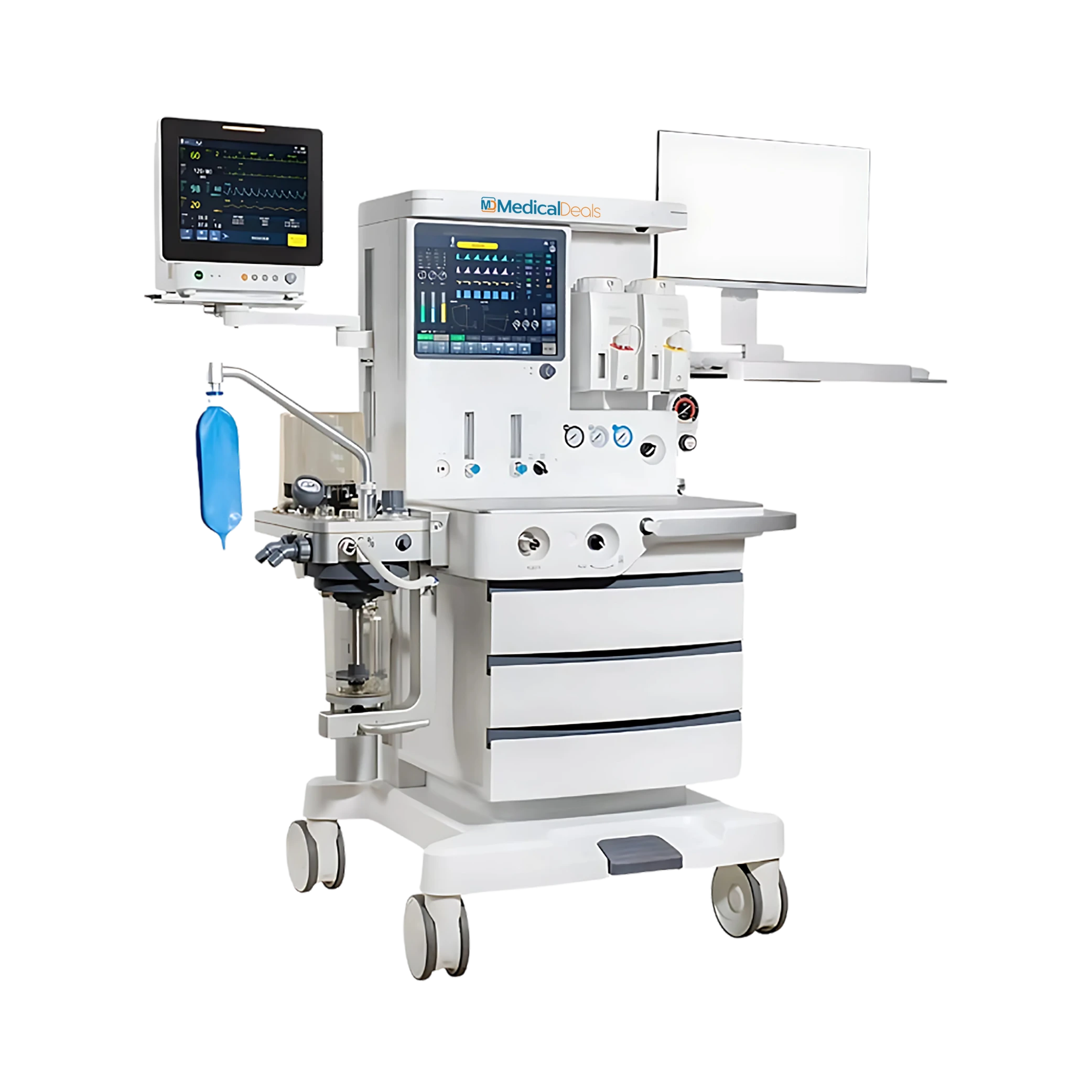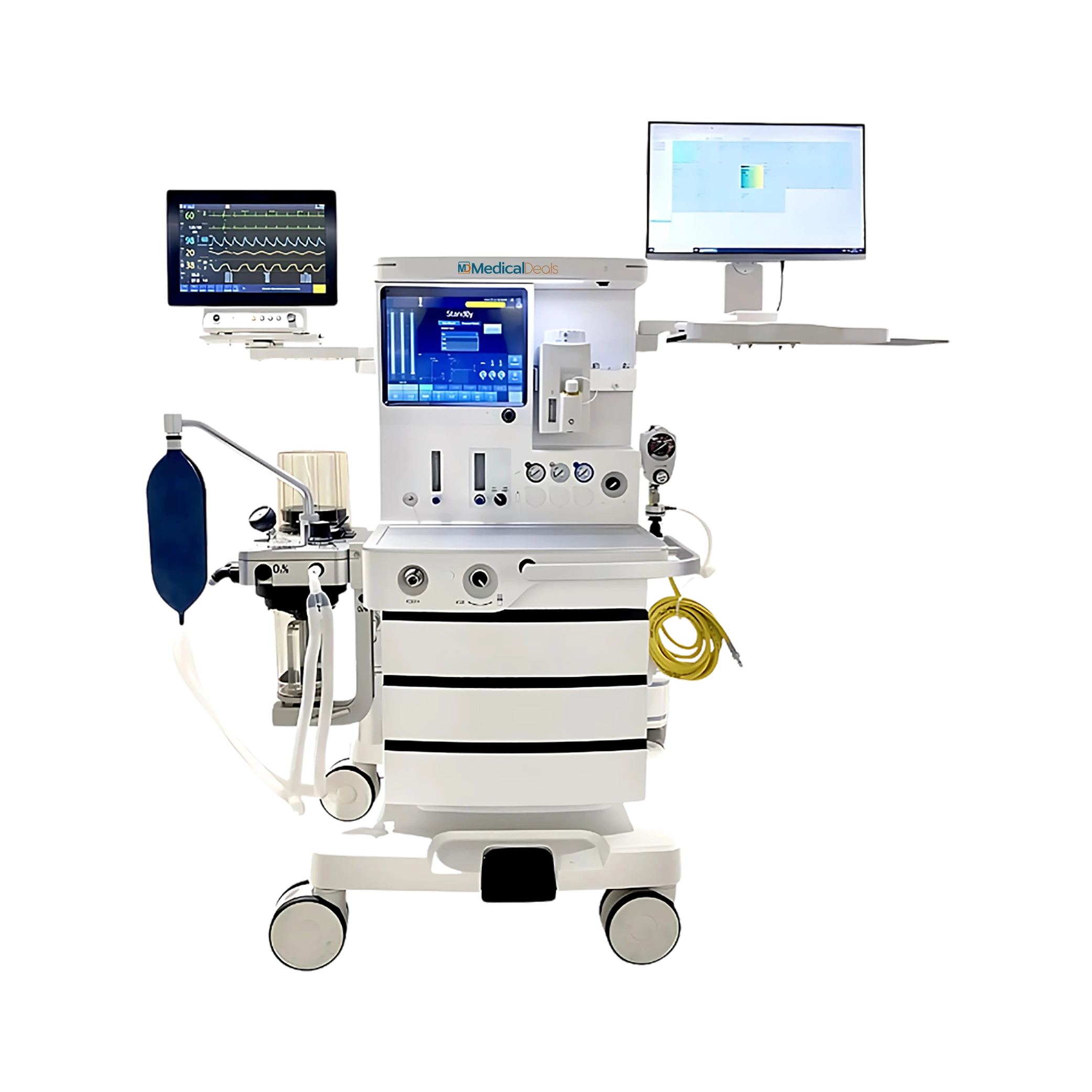





Anesthesia System MD-ANS-1007 features versatile modes like V-CMV, V-SIMV, P-CMV, P-SIMV, PSV, PCV-VG, and Manual, providing tailored respiratory support. It offers precision with tidal volumes from 10 to 1500 mL and a frequency of 4 to 100 breaths per minute. It has an I ratio of 4:1 to 1:10 controlling the patient’s ventilation. Built for durability, it comes in a protective wooden case. Our Anesthesia system ensures enhanced safety and flexibility, making it ideal for anesthesia and critical care settings.
$ 15600 : Each of 1
Specifications
| Ventilation Modes | IPPV, PCV-PC, PCV-VG, V-A/C, P-A/C, P-SIMV, V-SIMV, PSV, PCV-VG SIGH, MANUAL |
| Gas Source | O2, N2O, AIR |
| Flowmeter range | O2: 0 to 15 L/min N2O: 0 to 12 L/min AIR: 0 to 15 L/min |
| Rapid Oxygen Supply Range | 35 L/min to 75 L/min |
| Oxygen Concentration | 15 % to 100 % |
| Tidal Volume (Vt) range | 0, 10 mL to 1500 mL |
| Frequency range | 4 /min to 100 /min |
| Inspiratory Ratio (I) | 4:1 to 1:10 |
| Inspiration Time Range | 0.2 s to 5 s |
| Minute Volume (MV) Range | 0 L/min to 100 L/min |
| Positive End-Expiratory Pressure (PEEP) | 0 cmH2O to 30 cmH2O |
| Pressure Triggering Sensitivity (PTr) | -20 cmH2O to 0 cmH2O |
| Flow Trigger Sensitivity (FTr) | 0.3 L/min to 15 L/min |
| Gas Pressure Range | 280 kPa to 600 kPa |
| Pressure Limit | 10 cmH2O to 100 cmH2O |
| SIGH | 0 (off) 1/100 to 5/100 |
| Inspiration Apnea Ventilation | OFF, 5% to 60% |
| Trigger | 5% to 95% |
| SIMV frequency range | 4 /min to 60 /min |
| Rise time | 0 s to 2 s |
| Bellow | 1L |
| Oscillogram Types | P-T (Pressure-Time) F-T (Flow-Time), V-T (Volume-Time) P-V loop (Pressure-Volume Loop) ETCO2-T (ETCO2-Time) F-V (Flow-Volume Loop) F-P (Flow-Pressure Loop) |
| High-minute volume alarm | Power supply Undervoltage alarm |
| Low-minute volume alarm | Low tidal volume alarm |
| High airway pressure alarm | Continuous pressure alarm |
| Low airway pressure alarm | High-frequency alarm |
| No tidal volume | Suffocation alarm |
| High tidal volume alarm | Backup power alarm |
| Absorber disconnection alarm | Battery exhausted alarm |
| High oxygen concentration alarm | Fan error |
| Low oxygen concentration alarm | Low oxygen supply alarm |
| High ETCO2 concentration alarm | Low-frequency alarm |
| Power Consumption | 85 VA |
| Power Supply | Voltage: 100 to 240 V Power Frequency: 50/60 Hz |
| Packaging Dimension | 1005 × 960 × 1700 mm |
| Net Weight | 132 kg |
| Gross Weight | 253 kg |
Features
15” TFT LCD touchscreen
Built-in electronic flowmeter
Self-testing compliance compensation
automatic compliance compensation
Patient-centered ventilation
Separate design ensures long use life
Fresh oxygen or air
Real-time monitoring
Mechanical flowmeter
Built-in Battery Backup
Compact and Light-weight
Standard Accessories
Anesthetic breathing system × 1
Power cord × 1
Fuse × 8
Fuse × 1
Fuse × 2
Central O2 supply tube× 1
O2 sensor × 1
CO2 sensor
Breathing tube × 2
Breathing tube × 2
Y connector Adult × 1
Y connector Child × 1
L connector × 2
Reservoir bag 1L × 1
Reservoir bag 3L × 1
Anesthetic mask adult × 1
Anesthetic mask infant × 1
Anesthesia Vaporizer × 2
High pressure O2 hose × 1
High-pressure AIR hose × 1
High pressure N2O hose × 1
Applications
Anesthesia System MD-ANS-1007 excels in Intensive Care Units (ICU), operating rooms, anesthesiology departments, and other medical settings, offering professional design for adult, pediatric, and neonatal inhalation anesthesia and respiratory management with advanced ventilation modes.
Anesthesia System is an advanced, user-friendly anesthesia delivery system designed to meet the needs of modern healthcare facilities. Engineered for safety, accuracy, and efficiency, it features an intuitive touchscreen interface. It allows seamless control and monitoring of anesthesia parameters. With precise gas flow meters and integrated safety alarms, the system ensures optimal delivery of anesthetic gases while prioritizing patient safety. Built with adaptability in mind, Our system provides Precision Care system support for a range of patient types, from pediatric to adult.
$ 8748
$ 7290
$ 11100
$ 9250
$ 13848
$ 11540
$ 6804
$ 5670
$ 7290
$ 6075
$ 8100
$ 6750
$ 15912
$ 13260